Showing Spotlights 1 - 8 of 28 in category All (newest first):
 Researchers develop antimicrobial door handle covers using iodine-loaded metal-organic frameworks, providing a promising solution to prevent infection spread in healthcare and public spaces.
Researchers develop antimicrobial door handle covers using iodine-loaded metal-organic frameworks, providing a promising solution to prevent infection spread in healthcare and public spaces.
Jun 5th, 2024
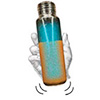 Coating glass vials with metal-organic frameworks enables simple, rapid, reusable and highly sensitive detection of water contaminants, outperforming current methods.
Coating glass vials with metal-organic frameworks enables simple, rapid, reusable and highly sensitive detection of water contaminants, outperforming current methods.
Apr 18th, 2024
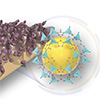 Researchers develop a scalable process for stable graphene-metal hybrids, enhancing sustainable chemical production with improved fabrication.
Researchers develop a scalable process for stable graphene-metal hybrids, enhancing sustainable chemical production with improved fabrication.
Feb 19th, 2024
 Scientists weave nanoscale magnetic fields into a 'Chinese knot' pattern, unlocking efficient microwave absorption and paving the way for new shielding materials and magnetic technologies.
Scientists weave nanoscale magnetic fields into a 'Chinese knot' pattern, unlocking efficient microwave absorption and paving the way for new shielding materials and magnetic technologies.
Feb 7th, 2024
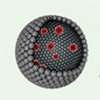 Researchers encased genetically modified microbes in protective metal-organic framework shells to create 'living seeds' that could enable the real-world use of engineered organisms for manufacturing, medicine, environmental remediation, and more.
Researchers encased genetically modified microbes in protective metal-organic framework shells to create 'living seeds' that could enable the real-world use of engineered organisms for manufacturing, medicine, environmental remediation, and more.
Dec 19th, 2023
 Researchers develop a crystalline porous metal-organic framework that precisely mimics origami folding patterns, introducing stimuli-responsive materials that reversibly change shape at molecular dimensions.
Researchers develop a crystalline porous metal-organic framework that precisely mimics origami folding patterns, introducing stimuli-responsive materials that reversibly change shape at molecular dimensions.
Dec 8th, 2023
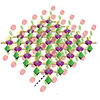 New study details a polymer-grafting approach for creating surface-functionalized MOF nanosheets, highlighting a significant advancement in the field of material science and its potential impact on nanotechnology.
New study details a polymer-grafting approach for creating surface-functionalized MOF nanosheets, highlighting a significant advancement in the field of material science and its potential impact on nanotechnology.
Dec 5th, 2023
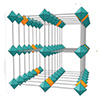 Researchers develop a new technique for systematically incorporating multiple rare-earth metals into MOFs, allowing precise tuning of properties like magnetism and optics.
Researchers develop a new technique for systematically incorporating multiple rare-earth metals into MOFs, allowing precise tuning of properties like magnetism and optics.
Nov 17th, 2023
 Researchers develop antimicrobial door handle covers using iodine-loaded metal-organic frameworks, providing a promising solution to prevent infection spread in healthcare and public spaces.
Researchers develop antimicrobial door handle covers using iodine-loaded metal-organic frameworks, providing a promising solution to prevent infection spread in healthcare and public spaces.
 Subscribe to our Nanotechnology Spotlight feed
Subscribe to our Nanotechnology Spotlight feed





